Saying Goodbye to Summer
6 October 2025

Here's a little throwback to the end of last season. We took a trip to Utah and went tubing with Zion Tubing. Nothing like floating down a good river.
Why I Set New Goals
5 October 2025

Remembering My Original Dreams
When I was a teenager, I had a pretty clear set of ideas about what I wanted to do with my life. I wanted to own a little house. I wanted to have three kids: two boys and a girl. I wanted to be a teacher for high school and college. I wanted to have a book with my name on it sitting on my bookshelf, and I wanted to do some traveling and have some adventures.
Checking Off the List
At age 39, I've seen 48 states, been to six countries outside of the United States, taught high school for 12 years, and taught college for 10. I have three books in my bookcase that I’ve been part of, published a bunch of short stories, earned too many college degrees, had the two boys and a girl, been skydiving twice, bungee jumping once, wing walking, scuba diving, acted in a couple of short films, and done everything I set out to do and more.
Sounds great, right?
Sure.
But the thing is, once you do all the things you set out to do, and once you’ve accomplished the goals that were supposed to be lifelong, you’re left wondering what you’re supposed to do now.
Rethinking What Really Matters
I used to do a lot of things because I felt like it would make me an interesting person. I wanted to be the most interesting person in any room I was standing in. Now that I’m older, I realize that part doesn’t really matter that much.
There will always be someone more interesting, more well-traveled, smarter, or with more accomplishments. Doing new things isn’t about being interesting anymore.
Learning to Set New Goals
I set a lot of goals for myself because my tastes change and because I learn new things about myself all the time. After you’ve been through a lot of difficult times, there comes a day when you realize that you need to make a change and understand yourself more. With that understanding comes waves of knowledge about yourself, along with new interests and new goals.
Why I Keep Moving Forward
I don’t want to be stagnant in my daily routine, honestly, because it’s just really boring for me to do the same things over and over again. I am in awe of people who can get up every day and go to the same job for decades.
I have owned three houses and rented a few places too, which means I’ve moved around quite a bit. I guess that’s just me getting bored again.
What It Means to Live Fully
I’m starting to realize now that things have changed. While I still enjoy having a lot of goals and doing a lot of things, it’s not because I have to or because I need to impress anyone. It’s because I want to enjoy my life while I still can.
I want to someday be lying on my deathbed, able to look around and see that I’ve done everything I could have possibly wanted to do. Maybe someone out there will find some of the relics of what I’ve done, and it will inspire them to live a full life themselves or to do something they think they cannot do.
Make Today Your Day
So, make today your day and go do something you’ve always wanted to do. Don’t just have a bucket list that you save and may never get to. When you want to do something, just go do it, as long as it’s not hurting you or other people.
NOT GONNA LIE; I GENERATED MOST OF THE POSTS BELOW USING CHATGPT. IT WAS NEW AND I WAS EXCITED. Not the ones above, though ;)
Jobs for English Majors: Soft Skills Trainer
24 March 2023

Soft skills are the essential skills that help individuals communicate, collaborate, and work effectively in a professional environment. With the growing importance of soft skills in the workplace, the demand for soft skills trainers has been on the rise. If you have a passion for helping others develop their soft skills, becoming a soft skills trainer could be a great career option for you. In this blog post, we will discuss how to become a soft skills trainer and why people with English degrees are good at this profession.
What is a Soft Skills Trainer?
A soft skills trainer is a professional who helps individuals and organizations improve their soft skills. Soft skills include communication skills, leadership skills, teamwork, emotional intelligence, problem-solving, and time management. A soft skills trainer provides training and coaching to help individuals develop these skills and apply them effectively in the workplace.
How to become a Soft Skills Trainer?
Becoming a soft skills trainer requires a combination of education, experience, and skills. Here are the steps to follow if you want to become a soft skills trainer:
Step 1: Obtain a degree in a relevant field While there is no specific degree required to become a soft skills trainer, having a degree in a relevant field such as English, Communications, Psychology, or Education can be beneficial. A degree in any of these fields will provide you with the knowledge and skills necessary to become an effective soft skills trainer.
Step 2: Gain relevant work experience To become a successful soft skills trainer, you need to have relevant work experience. This can be achieved by working in a related field such as human resources, corporate training, teaching, or coaching. You can also gain experience by volunteering to provide soft skills training for non-profit organizations.
Step 3: Develop soft skills To become a soft skills trainer, you must also possess strong soft skills yourself. This means you need to have excellent communication skills, be able to work well in a team, have strong problem-solving skills, and be emotionally intelligent.
Step 4: Obtain a certification While not mandatory, obtaining a certification in soft skills training can increase your credibility and help you stand out in a competitive job market. Some of the popular certifications include Certified Professional in Learning and Performance (CPLP) and Certified Professional Trainer (CPT).
Why People with English Degrees are Good at this Profession?
People with English degrees possess many of the skills and qualities that are essential to becoming a successful soft skills trainer. Here are some of the reasons why people with English degrees are good at this profession:
-
Strong communication skills English degree programs focus heavily on reading, writing, and communication skills. These skills are critical for effective communication, which is a fundamental aspect of soft skills training.
-
Attention to detail English majors develop strong attention to detail through their coursework, which is an essential skill for soft skills trainers who need to observe and analyze behavior and provide feedback.
-
Analytical thinking English degree programs require students to analyze literature and interpret complex texts, which helps them develop strong analytical thinking skills. Soft skills trainers need to be able to analyze their clients' needs and tailor their training programs accordingly.
-
Ability to adapt to change English majors are often exposed to a wide range of topics and writing styles, which helps them develop an open-minded approach to learning. Soft skills trainers need to be adaptable and able to adjust their training programs to meet their clients' changing needs.
Soft skills trainers are in high demand, and this profession offers an opportunity to make a positive impact on people's lives. If you have a passion for helping others develop their soft skills, and possess the necessary skills and education, becoming a soft skills trainer could be a rewarding career path. People with English degrees possess many of the skills and qualities that are essential to becoming a successful soft skills trainer, making
Why Community College?
23 March 2023

Community college education is often overlooked as a viable option for further education, but it has numerous benefits that students should take advantage of. Community colleges offer students an affordable, accessible, and practical education that can be a stepping stone to a four-year university or a career-focused job. In this blog post, we will explore the ways and benefits of taking advantage of a community college education.
- Cost-effective
Community college education is cost-effective compared to traditional four-year universities. The tuition fees for community college are often lower than those of four-year universities. Additionally, students can save money by living at home or in shared accommodation with other students. They can also save money on transportation costs since community colleges are often located within commuting distance.
2. Flexible schedules
Community colleges offer students more flexibility in scheduling their classes. Students can attend part-time or full-time, depending on their work and family schedules. They can also choose from a wide range of courses and schedules, including evening and weekend classes.
3. Transfer credits to four-year universities
Many community colleges have transfer agreements with four-year universities. This means that students can complete their first two years of general education courses at a community college and then transfer to a four-year university to complete their degree. This option can save students a considerable amount of money on tuition fees.
4. Smaller class sizes
Community colleges offer smaller class sizes, which can be beneficial for students who need more individual attention. Smaller classes also create a more supportive and collaborative learning environment, where students can interact more with their professors and peers.
5. Career-focused education
Community colleges offer practical, career-focused education that can prepare students for the workforce. Many community colleges offer programs in vocational fields, such as nursing, welding, and automotive technology, which can lead to high-paying jobs. These programs often include internships and job placement services to help students secure employment after graduation.
6.Continuing education
Community colleges offer continuing education courses for students who want to learn new skills or advance their careers. These courses can be taken online or in-person and can cover a wide range of topics, from accounting to web development. Continuing education courses are often more affordable than traditional university courses, making them an attractive option for students who want to continue learning while working.
Community college education has many benefits that students should take advantage of. It offers an affordable, accessible, and practical education that can be a stepping stone to a four-year university or a career-focused job. Community colleges offer flexible schedules, transfer credits, smaller class sizes, career-focused education, and continuing education courses. By taking advantage of community college education, students can achieve their academic and career goals while saving money and time.
Using Keywords in Academic Databases
9 March 2023

Academic databases are an invaluable resource for students, researchers, and scholars alike. These databases provide access to thousands of scholarly articles, books, and other sources of information that can be used to deepen our understanding of a particular topic. However, with so much information available, it can be difficult to find exactly what you're looking for. One way to streamline your search is by identifying the right keywords. In this post, we'll discuss how to find keywords in an academic database.
Step 1: Define your research question or topic
Before you begin searching for keywords, it's important to have a clear understanding of your research question or topic. This will help you identify the most relevant keywords to use in your search. For example, if you're researching the impact of social media on mental health, your research question might be: "What are the effects of social media on mental health?" Once you have a clear research question or topic, you can begin to identify relevant keywords.
Step 2: Brainstorm potential keywords
The next step is to brainstorm potential keywords that relate to your research question or topic. Start by thinking about the main concepts and themes that are central to your research. In the example above, some potential keywords might include:
- Social media
- Mental health
- Psychological well-being
- Internet use
- Technology
- Cyberpsychology
You can also think about synonyms and related terms that might be used in the literature. For example, "online communication" or "digital technology" could be used instead of "social media."
Step 3: Use a thesaurus or subject headings
Many academic databases have a thesaurus or list of subject headings that can help you identify relevant keywords. These subject headings are pre-defined terms that are used to index articles in the database. For example, the database PsycINFO has a thesaurus that includes subject headings such as "Social Media," "Mental Health," and "Internet Use." By using these subject headings, you can ensure that you're finding articles that are directly relevant to your topic.
Step 4: Analyze articles in your field
Another way to identify keywords is to analyze articles in your field. Look for articles that are similar to your research question or topic and examine the language that is used. What words or phrases are frequently used in the abstract, introduction, and conclusion? These can be potential keywords to use in your search.
Step 5: Refine your search
Once you've identified potential keywords, it's important to refine your search to ensure that you're finding the most relevant articles. You can do this by using Boolean operators (such as "AND," "OR," and "NOT") to combine keywords or exclude irrelevant terms. You can also use quotation marks to search for exact phrases, and parentheses to group related terms.
In conclusion, finding the right keywords is an important step in conducting research in an academic database. By following these five steps, you can identify relevant keywords and streamline your search for the most pertinent articles. Happy researching!
The Pros and Cons of Self-Publishing
9 February 2023
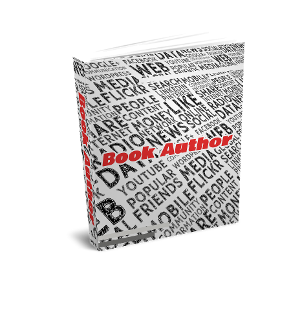
There is no one answer to the question of whether or not self publishing is a good option for an author. It depends on a variety of factors, including the author's goals, the manuscript's quality, and the author's ability to market and sell the book. I have published through both avenues, and here's what I've learned, in a nutshell:
Pros
Self publishing can be a great way for an author to get a book published without having to go through the traditional publishing process. This can be a good option for authors who are unable to find a publisher, or for authors who want more control over the publishing process. Self publishing can also be a good way to get a book out quickly and to avoid the delays that can often occur with the traditional publishing process.
Cons
However, self publishing can also be expensive and time consuming. It can be difficult to get good distribution for a self published book, and it can be hard to make a profit from self publishing. It can be incredibly difficult to find companies or individuals to provide services such as editing, design, and marketing.
While this list in cursory, and there are a lot of other details to consider in either process, understanding some of these basic elements can be a great jumping off point when deciding which route is best for you.
What Could be in Store for the Future of Education?
8 February 2023

The future of education is constantly changing and evolving. With new technology and tools, there are more ways than ever to learn and get an education. Based on the incorporation of tech into the classroom, the test of at-home learning/teaching during COVID, and the wave of families opting out of public education, the question remains: what will the future of education look like?
Here are some of the ways that education may change in the future:
1. More online and remote learning opportunities. With the internet, there are more opportunities than ever to learn online and remotely. This can include taking online courses, watching lectures online, and participating in online discussions.
2. More personalized learning. With new technology, it is becoming easier and easier to personalize learning for each student. This can include using tools like adaptive learning software and personalized learning plans.
3. More use of technology in the classroom. Technology is becoming more and more common in the classroom. This can include using laptops and tablets in class, using online tools for assignments, and even using virtual reality for learning.
4. More use of artificial intelligence and machine learning. Artificial intelligence and machine learning are becoming more and more common in education. This can include using AI to grade papers and assignments, to provide feedback to students, and to help with learning.
5. More emphasis on critical thinking and problem solving. What children learn in school is meant to mirror the types of occupations they may hold in the future. Whereas school used to push hands-on work to prepare for factory jobs, etc., AI is leading people away from these types of jobs. Lessons should now mirror the types of skills and occupations that will realistically lie in learners' paths.
While no one can truly say what education will be like in the coming years, the past few can most certainly give us a hint and help us prepare for necessary changes.
Interactive Learning: Why You Should Incorporate Choose Your Own Adventure Stories in Your Pedagogical Practices
7 February 2023

Remember the joy of opening up a Choose Your Own Adventure book and leading the protagonist through various journeys? Dark caves... pirate ships... perilous dangers...? You weren't just reading about the knight or the explorer, you WERE them. Why aren't these books used in the educational setting? Here are some reasons they should be:
- CYOA stories are a great way to engage readers and get them excited about reading. They allow readers to become part of the story and make decisions that will affect the outcome. This type of story can be used to teach children problem-solving skills, as well as help them develop their own sense of creativity and imagination.
- CYOA stories can also be used to help children learn about different cultures and lifestyles. By allowing them to explore different paths, they can gain a better understanding of different cultures and lifestyles. This can help them become more tolerant and accepting of others.
- CYOA stories can also be used to help children develop their critical thinking skills. By allowing them to make decisions and explore different paths, they can learn to think for themselves and come up with creative solutions to problems. This type of story can also help children learn how to make decisions based on facts and evidence, rather than just their own opinion.
- Finally, CYOA stories can be used to help children develop their writing skills. By allowing them to create their own stories, they can learn how to structure a story, create characters, and develop a plot. This type of story can also help children learn how to use descriptive language and create vivid images in their writing.
Overall, choose your own adventure stories are a great way to engage readers and get them excited about reading. They can help children learn problem-solving skills, gain a better understanding of different cultures and lifestyles, develop their critical thinking skills, and improve their writing skills.
I recently started dabbling in writing my own short children's collection to use in elementary classrooms! "Choose Your Own Adventure" is a trademarked brand, and I am not associated with this brand, so my works are my own, inspired by the genre. Feel free to check it out on my Teachers Pay Teacher, The Crazy English Lady:
How to Fix a Crazy Classroom
6 February 2023

Classroom management is an essential skill for any teacher, and it can be difficult to master. Luckily, there are a few simple techniques that can help keep your classroom running smoothly and efficiently. Here are five classroom management techniques that can help you create an effective learning environment:
1. Establish Clear Rules and Expectations: Establishing clear expectations and rules from the beginning is one of the most important aspects of effective classroom management. Make sure your students know what is expected of them and what the consequences are for not following the rules.
2. Set Routines and Procedures: Establishing a routine and procedures for your classroom can help students feel comfortable and know what to expect. Make sure you provide clear instructions for each activity and review expectations often.
3. Use Positive Reinforcement: Positive reinforcement is an important tool for classroom management. Reward good behavior and recognize when students are following the rules and participating in class.
4. Have Clear Consequences: Establishing clear consequences for misbehavior can help students understand that certain behaviors are not acceptable. Make sure your punishments are consistent and fair.
5. Focus on the Positive: It’s easy to get caught up in focusing on the negative, but it’s important to recognize and celebrate the positive aspects of your classroom. Celebrate successes and provide positive feedback to keep your students motivated.
By implementing these five classroom management techniques, you can create a more effective learning environment for your students. With the right strategies, you can help your students succeed and create an enjoyable learning atmosphere.
What is "The Final Girl Trope"? A Lesson in Film Studies
5 February 2023

The Final Girl trope is a popular horror movie trope that has been used in countless horror movies over the years. The Final Girl is the last character standing after a group of people have been killed by a villain or monster. The Final Girl is usually a woman and is often the only survivor of the group. She is typically portrayed as strong, independent, and resourceful, and is often the only one capable of stopping the villain or monster.
The Final Girl trope has been used in movies since the 1970s, and it is still a popular trope today. One of the earliest examples of the Final Girl trope is in the 1974 movie The Texas Chainsaw Massacre. In the movie, a group of young people are terrorized by a family of cannibals, and the only survivor is the young woman, Sally Hardesty.
This character type has been used in a variety of ways in horror movies, from the strong and capable heroine, to the vulnerable and helpless victim. The Final Girl trope has become a staple of the horror genre, and it has been used in countless films over the years.
The Final Girl trope is often seen as a way of empowering female characters in horror films. By making the Final Girl strong and capable, it gives her the opportunity to take the lead in the fight against the villain or monster. It also allows the audience to identify with her and root for her to survive and defeat the villain.
Put quite simply, the Final Girl trope is a popular trope in horror movies, and it has been used in countless films over the years. It is often seen as a way of empowering female characters, and it has become a staple of the horror genre. Whether you love the Final Girl trope or not, it is undeniable that it has had a huge influence on the horror genre.
Should I Get an English Degree?
4 February2023

Are you considering getting a degree in English? You’re not alone - English degrees are among the most popular for college students. A degree in English opens up a wide variety of career opportunities and offers numerous benefits. Here’s a closer look at why you should consider getting an English degree.
First, an English degree provides a solid foundation for a variety of career paths. With an English degree, you can pursue a career in journalism, public relations, or writing. You can also go into education, law, or even business. With an English degree, you will have the skills necessary to be successful in any of these areas.
Second, with an English degree, you will be prepared to enter the job market. According to the Bureau of Labor Statistics, professionals with an English degree are in high demand. The job outlook for English majors is positive, with an expected 6% growth in jobs through 2029. This is much higher than the projected 4% growth rate for all occupations.
Third, an English degree teaches you valuable skills that will be helpful in any job. An English degree teaches you how to write clearly and effectively, which is an important skill in any industry. You will also learn how to research and analyze information, as well as how to think critically. These skills will be valuable in any job.
Finally, an English degree can open up doors to higher education. If you decide to pursue a master’s degree or higher, an English degree can give you the background and skills necessary to succeed. In addition, if you decide to pursue a career in writing or publishing, an English degree can provide the foundation you need to be successful.
Getting an English degree can be a great way to open up new career opportunities and provide you with the skills necessary to succeed. With an English degree, you will be prepared to enter the job market and be successful in any field. So if you’re considering getting a degree in English, it’s definitely worth considering.
Bringing Back Banned Books
3 February 2023

Banned books are great tools for engaging students because they provide an opportunity to discuss and challenge ideas that may not be accepted by society. By encouraging students to read and discuss these books, teachers can help them develop critical thinking skills and gain an appreciation for diverse points of view. Banned books can also raise awareness of important topics such as censorship, freedom of speech, and social justice.
In addition, reading banned books can give students an opportunity to explore topics that are often taboo in mainstream literature. By reading books that are deemed inappropriate for certain ages or groups, students can gain a better understanding of the world and the issues that affect it. This can help them become more informed citizens and develop empathy for those who are different from them.
Finally, reading banned books can help students gain a better understanding of the importance of freedom of speech and the power of words. When students read books that have been banned, they can gain an appreciation for how powerful words can be and how they can impact society. They can also learn to respect different opinions and viewpoints, which can help them become more tolerant and open-minded individuals.
Overall, banned books are great tools for engaging students and helping them develop critical thinking skills, gain empathy, and appreciate the power of words. By reading books that have been banned, students can gain an appreciation for diversity and learn to respect different opinions.
Check out this list of 30 popular banned books from Readers Digest:
Examining Valentine's Day Tropes and Corporate Greed
2 February2023
Valentine’s Day is one of the most popular holidays for marketers, but it’s also one of the most overused. From red and pink decorations to cheesy love songs and heart-shaped boxes of chocolate, there are certain tropes and themes that are used over and over again.
<3 The most common Valentine’s Day trope is the idea of romantic love. Anything related to love is fair game for marketers, from romantic dinners to jewelry and flowers. While some of these items can be meaningful gifts, they can also come off as cliché and unoriginal.
<3 Another common trope is the idea of the "perfect couple". Marketers often use images of two people in love, often in a romantic setting, to sell products and services. This can be problematic as it perpetuates unrealistic expectations of what relationships are supposed to look like.
<3 Finally, there’s the idea of the “perfect” Valentine’s Day gift. Marketers often suggest that the best gifts are expensive and luxurious, such as expensive jewelry or exotic vacations. Again, this can create unrealistic expectations and put pressure on people to buy expensive gifts for their loved ones.
Valentine’s Day is a (debatably) important holiday, and some suggest marketers should use it as an opportunity to create meaningful connections. Instead of relying on clichés and tropes, marketers should focus on creating unique and creative campaigns that reflect the true spirit of the holiday. By avoiding the overused Valentine’s Day tropes and marketing for the holiday in a more meaningful way, marketers can create campaigns that resonate more with their target audiences.
Instead of giving my students a love poem or something sappy, I like to have them look at the monetary side of the holiday. My webquest asks students to find statistics and other less traditional information to bring a new perspective in regarding this day of love. Check out my Webquest on Teachers Pay Teachers, The Crazy English Lady:
Be the Brightest Crayon in the Box: Euphemisms and ELLs
27 January 2023

English language learners (ELLs) often struggle to comprehend euphemisms, which are words or phrases used to replace more direct or blunt terms. Euphemisms are often used to soften the impact of a statement or to make it more polite. For example, instead of saying “He died,” one might say “He passed away.” While these phrases may seem straightforward to native English speakers, they can be difficult for ELLs to understand.
The difficulty in understanding euphemisms is due to the fact that they are often idiomatic expressions, which means they are not literal. For example, the phrase “kick the bucket” is a euphemism for “die.” This phrase is not literal, so it can be difficult for ELLs to understand. Additionally, many euphemisms are culture-specific, so they may not be familiar to ELLs from different backgrounds.
Fortunately, there are several strategies that teachers can use to help ELLs comprehend euphemisms. First, teachers should provide explicit instruction on the meaning of euphemisms. This can be done by providing examples of common euphemisms and explaining their meaning. Additionally, teachers can provide opportunities for ELLs to practice using euphemisms in context. For example, teachers can provide scenarios in which students must use a euphemism to express a certain sentiment.
Another strategy is to provide visual aids to help ELLs understand the meaning of euphemisms. For example, teachers can create a chart with common euphemisms and their literal meanings. This can help ELLs make connections between the two. Additionally, teachers can provide examples of how euphemisms are used in everyday conversations. This can help ELLs understand how to use them in their own conversations.
Finally, teachers should encourage ELLs to ask questions when they encounter unfamiliar euphemisms. This can help them better understand the meaning of the phrase and how to use it in context. Additionally, teachers should provide feedback to ELLs when they use euphemisms correctly. This can help them feel more confident in their ability to use them.
Overall, understanding euphemisms can be a challenge for ELLs. However, with explicit instruction, visual aids, and practice opportunities, teachers can help ELLs comprehend the intricacies of the English language.
While Euphemisms can be a huge hurdle for English Language Learners, they can be difficult for native English speakers, as well. In addition, euphemisms are not only a nuance of our language, but are a general criteria for many State standards. Check out my presentation and activity for teaching euphemisms on Teachers Pay Teachers, The Crazy English Lady:
Comics in the Classroom
25 January 2023
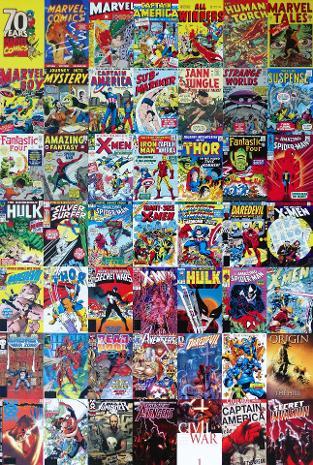
Comics and graphic novels have become increasingly popular in recent years, and they are now being used in classrooms to teach literature. Comics and graphic novels can be used to engage students in literature in a way that traditional books cannot. They can help students to better understand the characters, plot, and themes of a story, as well as to develop their own critical thinking skills.
One of the most effective ways to use comics and graphic novels to teach literature is to use them as a supplement to traditional books. For example, if a teacher is teaching a novel, they can use a comic or graphic novel version of the same story to help students better understand the characters and plot. This can be especially helpful for students who may struggle with reading traditional books. By providing a visual representation of the story, students can more easily comprehend the material.
Another way to use comics and graphic novels to teach literature is to use them as a way to introduce a new topic. For example, if a teacher is introducing a new genre of literature, they can use a comic or graphic novel to provide an overview of the genre and its key elements. This can help students to better understand the genre and to become more familiar with the types of stories that are typically found within it.
Finally, comics and graphic novels can be used to help students develop their own critical thinking skills. By having students analyze the artwork and text of a comic or graphic novel, they can learn to think more deeply about the story and its themes. This can help them to better understand the literature they are reading and to develop their own interpretations of the material.
Overall, comics and graphic novels can be a great way to engage students in literature. They can help students to better understand the characters, plot, and themes of a story, as well as to develop their own critical thinking skills. By using comics and graphic novels to supplement traditional books, teachers can provide students with a more engaging and enjoyable way to learn about literature.
Check out my template that students can use to create their own comic book hero. This can be used in a graphic novel unit or with The Hero's Journey:
Developing Thesis Statements with Graphic Organizers
24 January 2023
Graphic organizers are an incredibly valuable tool for teaching thesis statements. They provide students with a visual representation of their argument or idea that can help them to better understand the concept of a thesis statement and how to construct one. By using graphic organizers, teachers can help students to identify and plan out their ideas in an organized and concise manner, allowing them to develop a strong and effective thesis statement.
A thesis statement is a one to two sentence summary of the main point or argument of an essay. It is typically the last sentence in the introduction and serves as a roadmap for the rest of the paper. For students, understanding what a thesis statement is and how to construct one can be a difficult concept. This is where graphic organizers can be especially beneficial.
Graphic organizers are visual diagrams that are designed to help students better understand and organize information. Common graphic organizers include Venn diagrams, concept maps, and flowcharts. For teaching thesis statements, teachers can have students use a flowchart to brainstorm and organize their ideas. This flowchart should include the main topic, the main points that support the topic, and the conclusion that summarizes the main points.
Once students have created their flowchart, teachers can guide them in developing a thesis statement. By having the points already outlined in the flowchart, the process of constructing a thesis statement becomes much easier. This will help students to gain a better understanding of the concept of a thesis statement and how to write one.
Overall, graphic organizers are a great tool for teaching thesis statements. By providing students with a visual representation of their ideas, graphic organizers can help them to construct a strong and effective thesis statement. This will ensure that students have a better understanding of the concept and are able to write more effective papers.
I have created a colorful graphic organizer/flowchart for organizing a thesis statement. Check it out on my Teachers Pay Teachers, The Crazy English Lady:
Teaching 1984: More Relevant than Ever
22 January 2023

In George Orwell’s classic novel 1984, readers are presented with a dystopian future in which the government has complete control over its citizens. The novel serves as a warning to readers about the dangers of totalitarianism and the importance of freedom of thought and expression. As such, it is an important text to teach in classrooms, as it can help students understand the importance of democracy and the dangers of oppressive regimes.
The themes of 1984 are particularly relevant today, as many countries around the world are facing authoritarian governments and the erosion of civil liberties. By teaching 1984, students can gain a better understanding of the importance of democracy and the need to protect civil liberties. It can also help them to recognize the signs of an oppressive regime and how to resist it.
In addition, 1984 can help students to think critically about the power of language and how it can be used to manipulate people. The novel’s protagonist, Winston Smith, is constantly subjected to the government’s use of language to control and manipulate him. By teaching 1984, students can learn how language can be used to manipulate and control people, and how to recognize and resist it.
Finally, 1984 can help students to think critically about the power of technology and its potential for surveillance. In the novel, the government uses technology to monitor its citizens and control their behavior. By teaching 1984, students can gain a better understanding of the potential dangers of technology and how it can be used to oppress people.
In conclusion, 1984 is an important text to teach in classrooms, as it can help students to understand the importance of democracy and the need to protect civil liberties. It can also help them to think critically about the power of language and technology and how they can be used to manipulate and control people.
There are so many ways to write in a functional, applicable manner when it comes to this text. I have several essay topics students can get into and relate to. This can be used any time--at the end of Part One, or at the end of the novel itself. Check out the free resource on my Teachers Pay Teachers account, The Crazy English Lady by clicking the button below!
References: 1. Orwell, George. 1984. Signet Classics, 1950. 2. “Themes in 1984.” SparkNotes, SparkNotes, www.sparknotes.com/lit/1984/themes/. 3. “Themes in 1984.” Shmoop, Shmoop University, Inc., www.shmoop.com/1984-george-orwell/themes.html.
How to Give a Sampling of Shakespeare
20 January 2023

Shakespeare is one of the most influential writers in history, and his works are still studied and performed today. Incorporating Shakespeare into miniature lessons can be a great way to introduce students to the Bard’s works and help them understand the language and themes of his plays.
Here are some tips for incorporating Shakespeare into your lessons:
1. Start with a short introduction. Before diving into a full-length play, it’s important to give students a brief overview of Shakespeare’s life and works. This can include a brief biography, a discussion of the Elizabethan era, and a look at some of his most famous plays.
2. Use excerpts from the plays. Rather than trying to cover an entire play in one lesson, focus on short excerpts that can be used to illustrate key themes or language. This will help students understand the play without getting overwhelmed by the length or complexity.
3. Incorporate activities. To make the lesson more engaging, incorporate activities such as acting out scenes, writing monologues, or creating art projects. These activities can help students better understand the play and make the lesson more enjoyable.
4. Use modern adaptations. If you’re teaching younger students, consider using modern adaptations of Shakespeare’s plays. These can be easier to understand and more accessible for younger students.
5. Incorporate technology. Technology can be a great way to make Shakespeare more engaging for students. Consider using online resources such as videos, podcasts, and interactive activities to help students understand the plays.
By incorporating these tips into your lessons, you can help your students gain a better understanding of Shakespeare’s works and appreciate the beauty of his language.
References: 1. "Shakespeare in the Classroom." Folger Shakespeare Library, www.folger.edu/shakespeare-classroom. 2. "Teaching Shakespeare: Strategies for Engaging Students." National Endowment for the Humanities, www.neh.gov/divisions/education/summer-programs/teaching-shakespeare-strategies-engaging-students. 3. "Teaching Shakespeare: Strategies for Engaging Students." National Endowment for the Humanities, www.neh.gov/divisions/education/summer-programs/teaching-shakespeare-strategies-engaging-stud
Five Simple Rules for Writing Flash Fiction
17 January 2023

Flash fiction is a great way to get your creative juices flowing and to practice your writing skills. It’s a short form of storytelling that can be completed in a matter of minutes, but still packs a punch. Here are some tips on how to compose flash fiction:
1. Start with a strong hook. Flash fiction is short, so you need to grab the reader’s attention right away. Start with an intriguing opening line or an unexpected twist that will draw the reader in.
2. Establish the setting. Even though you don’t have a lot of space to work with, you still need to set the scene. Describe the environment and the characters in enough detail to give the reader a sense of place.
3. Create tension. Flash fiction is all about creating tension and suspense. Use dialogue, action, and description to build up the tension and keep the reader guessing.
4. Keep it concise. Flash fiction is short, so you need to be economical with your words. Every sentence should move the story forward and add to the overall narrative.
5. End with a twist. Flash fiction is all about the ending. Make sure you leave the reader with a satisfying conclusion that ties up all the loose ends. By following these tips, you’ll be able to compose compelling flash fiction that will keep your readers hooked until the very end. Good luck!
Learning About Greek Culture when Teaching The Odyssey
13 January 2023

If you’re looking for a fun and engaging way to teach your students about Greek culture and the Odyssey, then incorporating projects into your lesson plan is a great way to do it. Projects can help students learn in a hands-on way, and they can also be a great way to get students excited about the material. Here are some ideas for projects that you can use to teach Greek culture and the Odyssey:
1. Create a timeline of the Odyssey: Have your students create a timeline of the Odyssey, starting from the beginning of the story and ending with Odysseus’ return home. This project will help students understand the sequence of events in the story and how they all fit together.
2. Create a map of Odysseus’ journey: Have your students create a map of Odysseus’ journey, including all of the places he visited and the obstacles he faced along the way. This project will help students understand the geography of the story and how Odysseus navigated his way home.
3. Create a character profile: Have your students create a character profile for one of the characters in the Odyssey. This project will help students understand the motivations and personalities of the characters in the story.
4. Create a modern-day adaptation of the Odyssey: Have your students create a modern-day adaptation of the Odyssey, where they can use their own creativity to update the story and make it relevant to today’s world. This project will help students understand the themes and messages of the story in a more contemporary context.
These are just a few ideas for projects that you can use to teach Greek culture and the Odyssey. Incorporating projects into your lesson plan is a great way to engage your students and help them learn in a hands-on way.
When I teach The Odyssey, I also like to give students an idea of what life was like in Ancient Greece--what were the cities like? What were some important parts of the Greek culture? I assign a project that introduces students to these aspects and allow them to present to one another to really get a full scope of what life was like. Check out this free resource on my Teachers Pay Teachers, The Crazy English Lady:
Bigger is Better: Why You Should Expand Your Vocabulary
10 January 2023

Photo Courtesy of Pixabay
Having an extensive vocabulary sets people apart from one another. In a world where we (especially younger generations) are encouraged to be passive, watch TV, play on TikTok, and stray away from traditional, conventional studies, language is suffering.
So, how can having a next-level lexicon help you? Here are some simple, obvious ways, most likely relevant to students...
- You can read more challenging books. If you want to improve your reading skills, you need to read books that are at a higher level than your current reading level. By doing this, you will be able to understand the text better and improve your vocabulary at the same time.
- You can write better essays. When you have a wide range of words at your disposal, you can choose the right word to express your thoughts and make your writing more interesting. In addition, using complex words in your essays can make you appear smarter to your readers.
Ok, so what about real life situations?
- You can communicate more effectively. When you know more words, you can choose the right one to express your thoughts and ideas. This makes your conversations more interesting and informative.
- Having an impressive vocab makes you stand out. In job interviews or other situations, it may be just a matter of a few words making the difference between being hired or being looked over.
- You can gain credibility. But... you have to know what the words actually mean. There are numerous words people test out or use incorrectly. Checking on the definition, seeing how it's used in actual conversation and examples, and practicing using the word correctly is best practices in reinforcing use of a new word. If your language comes across as overly-basic or misused, how can people trust you and your opinions? If you sound intelligent and go above and beyond in your conversations and written expressions, people are more likely to take you seriously.
- You develop a sense of lexical variety. As previously when you know more words, you have more words to choose from. You may see a lot of people using filler in their conversations, like um, you know, right? The more you know, the better you can express yourself and even have more fun talking.
Why Children Love Whiskers
8 January 2023

Photo Courtesy of Pixabay
There’s something about whiskers that just makes kids love them. Maybe it’s because they’re soft and fuzzy, or maybe it’s because they make cats and other animals look so cute. Whiskers are one of those features that kids just can’t resist. Young ones are fascinated with whiskers because they’re so unique.
Perhaps children subconsciously identify with those creatures flaunting whiskers. They're important for cats and other animals because they help them to sense their surroundings. Animals can feel the wind blowing through them, and they can sense when something is close to them. This is why cats always seem to be twitching their whiskers – they’re trying to get a better sense of what’s going on around them... much like children, cats explore their little universe and test out new things everyday. Talk about kindred spirits.
Talking about whiskers is a great way to teach kids about animals. They can learn about how whiskers help animals to sense their surroundings, and they can learn about the different types of whiskers that animals have. Even more importantly, though, learning about whiskers can help children develop a sense of unity with other living beings, even those that may seem much different on the surface. Fostering an interest in seemingly small parts of our existence and encouraging questioning and critical thinking gets children in the mindset of noticing small details and wanting to learn about things they may have otherwise overlooked.
A few years back, my friend Maria and I took some time to write and illustrate a children's book with a homey, nostalgic, hand-drawn aesthetic. The idea came to us when a simple question was posed: "Where do whiskers come from?" In that moment, we knew something could be done with this inquisitive thought.
Synopsis: Written for preschoolers to early grade children, World of Whiskers is a humorous and whimsical 24-page picture book written in lyrical prose. Didactic and pedagogic, the book walks children through a series of animals with whiskers to illustrate and reveal unusual similarities. The book will leave children with a sense of exploration and interest in making connections between objects, animals, or people that they may not have considered before. Our readers will come to realize that just because something looks weird or unusual at first sight, it may not too different after all. Presenting similarities to children on this understandable and metaphoric level will ultimately promote problem-solving skills, tolerance, and facilitate children in forming different associations.
World of Whiskers is available on Amazon Kindle, here:
Film Studies: Lessons in Life
5 January 2023

Photo Courtesy of Pixabay
The world of film is a complex one, filled with complex stories, characters, and visuals. From the earliest silent films to the most modern blockbusters, movies have always been a powerful tool for expressing ideas, capturing emotions, and connecting with audiences. As such, film studies is an important field of study that can provide students with a deeper understanding of the world of cinema and how movies shape our culture.
Film studies provides students with the opportunity to explore a variety of topics related to film, including history, culture, and aesthetics. Through analyzing films, students can gain an insight into the ways that stories, images, and sound are used to communicate meaning and how these elements can be used to tell stories, evoke emotion, and create a unique viewing experience. As an interdisciplinary field, film studies also draws upon other academic fields, such as literature, psychology, and sociology, to provide students with a comprehensive understanding of film and its place in our culture.
In addition, film studies can provide students with the skills and knowledge necessary to pursue a career in the film industry. By providing students with an understanding of the cinematic medium, students can develop the necessary skills to work as a director, cinematographer, editor, or screenwriter. Furthermore, the critical thinking skills developed through film studies can be applied to other fields, such as marketing and advertising, giving students the tools necessary to create effective campaigns and stories.
Finally, film studies can be an invaluable tool for developing a student's creative skills. Through film analysis, students can hone their ability to think critically and express themselves creatively. By exploring the ways in which cinematography, lighting, sound, and narrative shape a film, students can learn to craft their own stories and develop their own visual style.
In short, film studies provides students with an incredibly valuable set of skills and knowledge that can be applied to both their academic and professional pursuits. By learning about the history and culture of film, as well as the technical and creative aspects of the medium, students can gain a greater understanding of cinema and the world around them.
Sometimes showing a movie in class can turn into a free-for-all where students either get distracted and play around or completely forget the purpose of showing the movie to begin with.
After teaching film studies for a few years, I developed an easy to use Movie Viewing Guide that can be used with any film. Check it out on Teachers Pay Teachers, The Crazy English Lady:
Why Read With Your Children?
2 January 2023

Reading with your children is one of the most important activities you can do as a parent. Not only is reading a fun way to spend quality time with your little ones, but it also helps to foster their development in many ways. According to the American Academy of Pediatrics, “reading aloud to children not only helps to expand their language and literacy skills, but also provides them with an opportunity to bond with a parent or caregiver.”
Reading with your children can help to improve their vocabulary and language skills, increase their knowledge of the world, and strengthen their critical thinking skills. Additionally, reading can help to foster their creativity and spark their imaginations. As Dr. Seuss said, “The more that you read, the more things you will know. The more that you learn, the more places you’ll go.”
Reading with your children also helps to develop their emotional intelligence and empathy. Reading stories together can open up conversations about different perspectives and can help children to understand and relate to different characters. Furthermore, reading together can help to create a positive bond between you and your children, and can help to instill a love of reading that will last a lifetime.
In short, reading with your children is an invaluable tool for their development and growth. As Loius L’Amour once said, “There are no limits to the imagination. The more you read, the more you will dream and the more you will learn.” So make sure to take time to read with your children every day, and watch as they grow and blossom into the amazing individuals they were meant to be.
Why Do People Love Horror?
30 December 2022

Photo Courtesy of Pixabay
Horror is one of the most popular genres in both film and literature. People enjoy watching and reading horror because it allows them to explore the dark side of human nature. Horror allows people to interact with their hidden concerns and experience suspense and terror without any real danger. Horror is also a way for people to release their aggression and explore their dark desires.
One of the reasons that horror is so popular is that it is a way for people to confront their fears. People can experience suspense and terror without any real threat to their safety. While terrifying events happen in the real world, luckily, most people do not have to face real danger or unusual happenings in their everyday lives. Immersing oneself into these situations allows for that adrenaline rush that may be missing during a "normal" day or life.
Another reason that horror is so popular is that it is a way for people to release their aggression. Film and literature provides the opportunity for the viewer to relate directly to a protagonist (or antagonist) in a way that scratches subconscious itches. This vicarious voyeristic relationship gives that sense of having lived through a situation the same way in which the characters have.
Overall, horror is popular because it is a way for people to experience a different type of excitement. Through imagery, sound, and full immersion into circumstances outside of social norms and expectations, consumers of horror are able to enter the recesses of their minds and feed unspoken parts of humanity.
Graphic Organizers: Visual Planning
27 December 2022

Photo Courtesy of Pixabay
Graphic organizers can be a powerful tool for teaching students how to structure an essay. In fact, research has shown that using graphic organizers can help students develop better writing skills and improve their overall understanding of essay structure.
In a 2009 study published in Educational Psychology Review, researchers found that using graphic organizers can help students develop better writing skills and improve their overall understanding of essay structure. Specifically, they found that graphic organizers can help students identify and organize relevant information, develop ideas, and structure an essay.
The study concluded that students who used graphic organizers to plan their essays had a greater understanding of the structure of their writing. They also had a better understanding of the topic, which allowed them to write more effectively.
In addition, graphic organizers can help students focus on the task at hand by providing a visual representation of their ideas and the structure of their essay. This can help students to stay organized and on track while they are writing.
Graphic organizers can also be used to encourage creativity in writing. By providing a visual representation of the essay structure, students can explore different ideas and create a more interesting essay.
As the study concluded, “Graphic organizers can aid students in understanding the structure of their essay and make writing more organized, creative and efficient.”
Overall, graphic organizers can be a valuable tool for teaching students how to structure an essay. By providing a visual representation of the essay structure and encouraging creativity, students can develop better writing skills and improve their overall understanding of essay structure.
“Graphic organizers can help students to identify and organize relevant information, develop ideas, and structure an essay,” says Dr. Lynn A. Sanford, professor of educational psychology at the University of Texas at Austin. “They can also help students to focus on the task at hand and stay organized while they are writing.”
The traditional Hamburger Outline is a great resource for younger writers. The repetition of the contents and visual imagery of a multi-layered object solidifies these ideas in writers. Check out my free hamburger outline on Teachers Pay Teachers, The Crazy English Lady:
Should I Provide Sample Essays to my Students?
23 December 2022

Photo Courtesy of Pixabay
Essay writing can be an intimidating task for many students. Writing a well-crafted, organized, and properly cited essay can be an arduous and time consuming process. Fortunately, there are a variety of resources and approaches students can use to improve their essay writing skills. Sample essays can be an effective way to learn how to write a successful essay.
Sample essays provide students with an example of how to structure their essay and how to develop their argument. They can also help students become familiar with the conventions of essay writing and understand the importance of adhering to the structure and conventions of the essay form. Sample essays can provide students with a valuable resource for learning the conventions of essay writing, including the techniques used to develop and support an argument, the use of evidence and citations, and the importance of clear writing.
As noted by Professor of English at the University of Chicago, Maud Ellmann, “In most cases, a sample essay can be a helpful tool for students who are learning to write essays. It can provide a template for writing and show them the structure of an essay, as well as how to use evidence and citations to support their argument.”
Sample essays can also help students become familiar with different types of essay writing, including persuasive, expository, and narrative essays. By familiarizing themselves with these different types of essays, students can learn how to craft an effective essay for a particular purpose. Additionally, sample essays can help students practice different writing styles and techniques, such as using vivid language and strong rhetorical devices.
Finally, sample essays can be a great resource for students to learn how to properly cite sources and use evidence to support their argument. As noted by Professor of English at the University of Chicago, Maud Ellmann, “It is important for students to understand the importance of citing sources accurately and using evidence to support their argument. Sample essays can be a great way for students to learn about the conventions of citation and how to use evidence to support their argument.”
Overall, sample essays can be a valuable tool for students to learn about the conventions of essay writing and become more confident in their own writing. Sample essays can provide students with a useful template for writing and help them become familiar with the conventions of essay writing, as well as how to use evidence and citations to support their argument. With the help of sample essays, students can become more confident in their own writing and better prepared to tackle their next essay.
Why is it Important to Study Film?
20 December 2022


Photo Courtesy of Pixabay
Film studies is an important field of study that can greatly benefit individuals in their everyday life. As the late film director Stanley Kubrick once said, “The screen is a magic medium. It has such power that it can retain interest as it conveys emotions and moods that no other art form can hope to tackle.” Film studies offers us a way to understand the power of the medium, and how it can be used to create meaningful experiences.
Through film studies, we can gain a better understanding of the role of films in society. As film studies professor, Barriss Mills, notes, “Films are a powerful force in the lives of people of all ages. They provide an emotional and intellectual window through which viewers can explore and analyze their own values and beliefs, as well as those of others.” By studying films, we can come to understand how films can shape our worldviews, as well as how they can be used to explore various topics such as gender, race, and class.
Film studies can also help us to develop critical thinking and analytical skills. As film studies professor, Joshua Neves, explains, “Film studies teaches us to view films in a critical light, to think analytically and to appreciate the power of cinema. We learn to dissect film, to evaluate its themes, styles, narrative structure, and even its emotional impact.” This type of critical thinking and analysis can be applied to many aspects of life, from our relationships to our jobs.
Finally, film studies can open doors to many different career paths. As the American Film Institute notes, “Film studies can lead to careers in the film industry, in fields such as directing, producing, and screenwriting. It can also lead to careers outside the film industry, such as in marketing, advertising, and communications.” This type of knowledge and experience can be invaluable in today’s highly competitive job market.
Film studies is an important field of study that can benefit individuals in many different ways. By studying films, we can gain a better understanding of the power of the medium, develop critical thinking and analytical skills, and open doors to many different career paths. By studying film, we can come to understand the magic of this powerful art form, and use it to enrich our lives.
References: Kubrick, S. (n.d.). Quotes. Retrieved from http://www.stanleykubrick.com/quotes.html
Mills, B. (n.d.). Why Study Film? Retrieved from https://www.thedailybeast.com/why-study-film
Neves, J. (n.d.). The Benefits of Studying Film. Retrieved from https://www.khanacademy.org/humanities/film-analysis/film-theory-and-criticism/v/the-benefits-of-studying-film
American Film Institute. (n.d.). Careers in Film. Retrieved from https://www.afi.com/programs/careers-in-film/
Studying Popular Culture through Film
17 December 2022
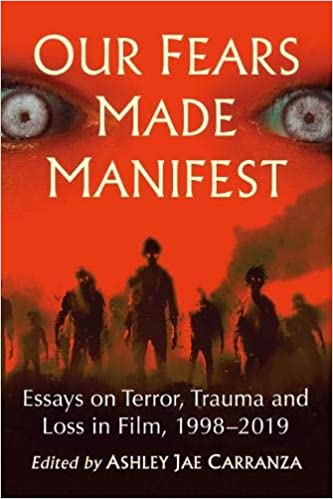
Pop culture is an integral part of our society and it is expressed in many forms, including film. Movies can be used as a powerful tool to educate, inform and provoke thought, as well as to entertain. Film has the ability to capture the attention of its audience and to spread messages that can influence the way people think and act. It can help to shape our culture and can inspire conversations about important topics.
Film has the ability to capture the attention of its audience and to spread messages that can influence the way people think and act. Movies have the potential to reach a large audience, and this makes them one of the most effective ways to communicate a message or to express a point of view. Film can be used to explore ideas of identity, belonging and culture, and to challenge traditional norms. It can also be used to explore complex social issues and to raise awareness about issues such as poverty, racism, and gender inequality.
In addition to its educational and cultural value, film can also be used to entertain. Movies can provide a form of escapism, allowing audiences to be taken away to another world and to experience stories that they may not have experienced in real life. Movies can also be used to provide an insight into the lives of people from different cultures and backgrounds, helping to build understanding and empathy.
Popular culture, as expressed in film, can have a significant impact on the way people think and act. Movies can be used to explore important topics, to challenge traditional norms, and to entertain. By encouraging people to think critically about the messages they receive from films, we can help to promote a more open-minded society that is better equipped to handle difficult conversations and to make informed decisions.
Our Fears Made Manifest: Essays on Terror, Trauma and Loss in Film, 1998-2019 (2021) is a collection of academic essays meant to explore themes across numerous film genres.
- Synopsis: The beginning of the 21st century was a time of unprecedented events in American society: Y2K, 9/11 and the wars that followed, partisan changes in government and the rapid advancements of the Internet and mass consumerism. In the two decades since, popular culture--particularly film--has manifested the underlying anxieties of the American psyche. This collection of new essays examines dozens of movies released 1998-2020 and how they drew upon and spoke to mass cultural fears. Contributors analyze examples across a range of genres--horror, teen rom-coms, military flicks, slow-burns, and animated children's films--covering topics including gender and sexuality, environmental politics, technophobia, xenophobia, and class and racial inequality.
- Reviews of this collection refer to it as "a monument to pre-pandemic culture."
- Table of Contents:
Introduction: Our Fears, Made Manifest Through Film -Ashley Jae Carranza
Section I: Issues Presented in Individual Films
Personal and Societal Fears of Loss: At the Crossroads in the Narrative Maze of Pan’s Labyrinth -Melanie Kreitler
“He rode past me and kept on goin’. Never said nothin’ goin’ by.”: The Silence of God in No Country for Old Men -Eric Brown
ParaNormative: Pressures on Sexuality within Society in ParaNorman -Ashley Jae Carranza
Mad Max and the Wasteland of Commodification -Phoebe Wagner
A Silent Encounter with the Terrifying Other in John Krasinski’s A Quiet Place -Richard Logsdon
Section II: Fears Across Films in Franchises
“I always cry at weddings”: Bride of Chucky, Seed of Chucky, and the Horror of the American Family at the Millennium -Lisa Ellen Williams
It’s Like You Can Pretend Everything’s Not Quite the Way It Is: Interrogating the Boundary Between Fiction and Reality in the Blair Witch Franchise -Jessica Armendarez
Terrifying Odysseys and Pleasurable Detours: Sexuality and Xenophobia in Road Trip and EuroTrip -Mica Hilson
The Lord of the Rings: Environmentalism and Essentialism in Middle Earth and the Western World -Ellen A. Ahlness
Deadpool and the Complex ‘Crisis’ of Masculinity -John Quinn
“Your Government Thanks You for Your Participation”: Schizophrenia, Late Capitalism, and The Purge -Laura Henderson
"I want your eye, man. I want those things you see through": Exposing America's "Post Racial Lie" in Get Out and Us -Matthew Cormier and Amanda Spallacci
Section III: Comparative Manifestations in Multiple Films
The Right to be Forgotten: Confronting the Past in Postmillennial Cinema -James Kenward
“One is the Loneliest”: Male Isolation, Rage, and Violence in Millennial Transition Films -Holly Lynn Baumgartner and Susan Duran
The Evolving Fear of the 1%: From Eyes Wide Shut to First Reformed- Donald McCarthy
Pocahontas Stories or, How Americans Vote for War Before Voting Against It -Jayson Baker
Tragedy, Heroes, and the American Imaginary: Blockbuster Conflict Film from 2006-2016 -Adriana Mariella
Categorize Your Powers: Film Adaptations of Dystopian Young Adult Literature in The Hunger Games, Divergent, and The Darkest Minds -Amy Cummins
Perfecting Journalistic Writing Skills
15 December 2022

Photo Courtesy of Pixabay
Journalistic writing is an important skill for any student to learn. It can help them become better writers and communicators, and help them express their ideas in a more effective way. But how can we teach journalistic writing to our students, in a way that is both creative and engaging? Here are some ideas on how to do just that.
1. Use Writing Prompts: Writing prompts can be a great way to get students thinking about journalistic writing. Give them a topic, such as a current event or a topic related to the course material, and ask them to write a journalistic article about it. This can be a great way to get them to practice their writing skills and think critically about the topic.
2. Create a Newspaper: Have your students create their own newspaper. This can be a great way to get them to practice their writing, as well as their design and layout skills. Have them create a newspaper with articles, editorials, and even some advertising. This can be a great way to get them to think critically and creatively.
3. Use Social Media: Social media can be a great tool for teaching journalistic writing. Ask your students to write articles about events or topics related to the course material, and then post them on their own social media accounts. This can be a great way to get them to practice their writing skills, while also helping to spread the message to a larger audience.
4. Have a Debate: Have your students debate a topic related to the course material or a current event. This can be a great way to get them to think critically and practice their writing skills. Ask each student to prepare an argument in favor of their position and then have them debate the issue in front of the class.
5. Use Video: Ask your students to create a video or documentary about a current event or topic related to the course material. This can be a great way to get them to practice their writing and video-editing skills. Have them create a storyboard for their video, then write and record a script for it.
By using these creative and engaging techniques, you can help your students become better writers and communicators. Teaching journalistic writing can be a great way to help your students think critically and express their ideas in a more effective way.
After teaching Journalism for several years and building students up to the point where their work is polished enough to publish articles on our blog and in our newsletters and school papers, I put one of my basic writing projects onto paper to share with other teachers.
My Situation Strips have "who", and"what", which can be cut out and placed into their respective jars or containers. After being introduced to the basics of journalistic writing and formula, (the 5 W's, nut graph, etc.), you can encourage students to use the format creatively. Students select one slip from each jar and fill in the "Why" and "How" of the information given. My personal favorite combination was: "Barack Obama discovers a cure for baldness... surprise, it's mayonnaise!"
Check out the situation strips on Teachers Pay Teachers, The Crazy English Lady:
Posters in the Classroom: Memorization and Reinforcement
13 December 2022

Photo Courtesy of Pixabay
Creating an effective learning environment in the classroom is essential to maximize students’ engagement and success in their academic pursuits. One simple and effective way to do this is through the use of posters. Posters can be used to reinforce ideas and skills, and they can provide a powerful visual aid to help students learn and retain information.
Posters are a great way to engage students in the classroom. They can be used to introduce a lesson, explain a concept, or reinforce information. Posters can also be used to help students visualize abstract concepts, thus making it easier to understand and remember them. Posters can also help students practice skills, such as problem solving or critical thinking. For example, a poster of a mathematical equation can help students practice their math skills, while a poster of a timeline can help students learn history.
Posters can also be used to motivate and encourage students. For example, posters can be used to recognize students’ accomplishments or to introduce new topics or challenges. Posters can also be used to set goals or expectations for students. For example, a poster of a timeline can be used to encourage students to complete a project or assignment by a specific date.
In addition to helping students learn, posters can also be used to create a fun and creative atmosphere in the classroom. Posters can be used to decorate the classroom, and they can also be used to display student artwork and other creative projects. Posters can also be used to introduce students to new topics or to encourage them to explore their interests.
Overall, posters are a powerful and versatile tool that can be used in the classroom to reinforce ideas and skills, motivate students, and create a fun learning environment. Posters can help students learn and retain information, practice new skills, and explore their interests. By using posters in the classroom, teachers can help students maximize their potential and achieve success in their academic pursuits.
Regardless of how many times I attempt to teach sentence types, coordinating and subordinating conjunctions, students seem to have a hard time remembering that information when asked at random.
As a child, I was able to memorize the alphabet backwards... why? Because my 2nd grade teacher had a poster of the alphabet around the room. When my mind started to wander, I read it backwards. Thirty years later, I still know it.
If I can memorize the alphabet backwards, my students can remember different elements of language if I give them the chance to scan the walls when they're bored. To help with this, I made a few posters, ripe with ridiculous sentence examples... maybe if it's funny, they'll remember better :)
Check out my Sentence Type Posters on Teachers Pay Teachers, The Crazy English Lady:
What is a Process Paper and Why Does it Matter?
7 December 2022
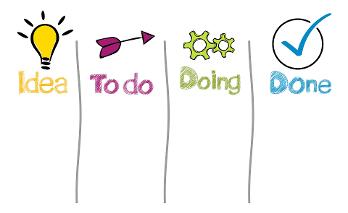
Photo Courtesy of Pixabay
The process paper is a useful and versatile tool for both students and professionals alike. Not only does it help to improve writing skills, but it can also be used to analyze and understand a subject more deeply. Writing a process paper can have a variety of benefits, from helping to develop communication skills to helping to organize complex information.
For students, writing a process paper can help them to develop their writing skills. This type of paper requires the writer to take a systematic approach to a subject, breaking it down into small steps and then describing each step in detail. This helps to develop the writer’s ability to articulate their thoughts in an organized and clear manner. It also helps to improve the writer’s ability to think critically and to develop a deeper understanding of the subject.
For professionals, writing a process paper can help to organize complex information. This type of paper requires the writer to break down a task into smaller steps, which helps to make the task easier to understand and manage. This type of paper can also help to make complex tasks easier to explain to others, as the writer can easily break down the task into smaller, more manageable chunks.
In addition, writing a process paper can help to develop communication skills. By breaking down a task into smaller steps, the writer is able to better explain their ideas and to better explain the process to others. This can be especially helpful for people who need to explain a task or process to a client or customer, as it makes it easier to understand.
Finally, writing a process paper can also help to develop research skills. As the writer is required to break down a task into smaller steps, they are also required to research the steps in order to provide more detailed descriptions. This can help to develop the writer’s ability to look for and find information, which can be beneficial in both academic and professional settings.
Overall, writing a process paper can be a great way to improve writing skills, organize complex information, develop communication skills, and develop research skills. Whether you’re a student or a professional, this tool can be extremely helpful in a variety of ways.
One of my favorite assignments to work on with students of all grade-levels is a process paper. It's great for presentations and allowing students to share the expertise on various topics. (I even offer extra credit if students actually bring in items and show us how to complete the process they've written about!)
Check out my resources for teaching a process paper on Teachers Pay Teachers, The Crazy English Lady:
Taking Time for Creative Writing
5 December 2022

Photo Courtesy of Pixabay
Creative writing projects can be incredibly beneficial for students of all ages. Not only do they help foster a love of writing, but they can also help students build important skills in communication, creativity, organization, and critical thinking.
For younger students, creative writing projects can be a wonderful way to explore their imaginations and inspire them to think more deeply about the world around them. Writing can be used to tell stories, explore new ideas, and express their feelings—all of which can help children learn more about themselves and the world around them.
In addition to increasing students’ creativity, writing projects can also help students learn important skills in communication. Writing can help students think more critically and express complex ideas in a clear and concise manner. By writing out their thoughts, students can learn to better articulate their opinions and become better communicators in general.
Older students can also benefit from creative writing projects. Writing can help students better organize their thoughts and develop strong arguments. It can also help them hone their research skills, as they’ll need to be able to find reliable sources in order to support their ideas. Furthermore, writing can help students develop their critical thinking skills by forcing them to think more deeply about a topic and devise logical arguments.
In short, creative writing projects can be incredibly beneficial for students of all ages. Not only do they help foster a love of writing, but they can also help students build important skills in communication, creativity, organization, and critical thinking. So, if you’re looking for a way to help your students learn and grow, consider incorporating creative writing into your curriculum!
I've had the privilege of teaching creative writing for several years at the high school level and the opportunity to serve as an editor for several literary magazines.
During this time, I honed in on several parts of the writing process that are often overlooked, particularly planning and using models.
Even if you do not have a creative writing class and are trying to incorporate some fun work in another class, using a year orsemester-long personal writing project helps scaffold students along the way from brainstorming to a finished product.
Check out my Personal Creative Writing Project Packet on Teachers Pay Teachers, The Crazy English Lady:
Teachers Love Teachers: Benefits of Marrying Another Educator
2 December 2022

Photo Courtesy of Pixabay
Teachers bring a unique set of skills and experiences to the classroom, and those same qualities can be beneficial in a romantic relationship between two teachers. Marrying another teacher can offer advantages that other couples may not have. From the ability to understand each other’s workloads and stress, to the potential for shared resources and professional development, teachers who marry other teachers can reap a variety of benefits.
The first benefit of marrying another teacher is the ability to empathize with each other’s workloads. Teaching is a demanding job, and teachers often work long hours, create lesson plans and grade papers in the evenings and on weekends. This can be stressful and can take a toll on a relationship, but when both partners are teachers, they share the same understanding of the pressures and demands of the job. This can lead to a greater sense of appreciation for each other’s time, and a feeling of support and understanding.
The second benefit of marrying a teacher is the ability to share resources and ideas. Teachers have access to a wealth of educational materials, and when two teachers are married, they can share their resources and ideas. This can include lesson plans, textbooks, classroom activities, and even tips and tricks to help each other in the classroom. Additionally, teachers can use their combined resources to create a supportive professional development network. This can be beneficial for both partners, as they can share the burden of lesson planning and classroom management.
Finally, being married to another teacher can be a great way to stay connected to the education field. Teachers who marry other teachers can share their experiences, frustrations, and successes. This allows them to stay abreast of developments in the education field and to better advise their students and colleagues.
In conclusion, marrying another teacher has a number of benefits. From the ability to understand each other’s workloads, to the potential for shared resources and professional development, teachers who marry other teachers can reap a variety of benefits. Ultimately, these benefits can lead to greater understanding, appreciation, and professional success for both partners.
References:
Lemons, C. (2019, April 17). What Are the Benefits of Marrying Another Teacher? Retrieved from https://www.livestrong.com/article/179957-what-are-the-benefits-of-marrying-another-teacher/
Kane, M. (2020, October 12). Benefits of a Teacher Marrying Another Teacher.
Teaching Tips:
The Lord of the Flies
30 November 2022

Photo Courtesy of Pixabay
In the world of literature, few books have earned the recognition and widespread acclaim of William Golding’s Lord of the Flies. This classic novel, which follows a group of British schoolboys stranded on a deserted island, has served as a powerful teaching tool for decades.
The story of the boys’ descent into chaos and anarchy is a powerful lesson for students of all ages. Lord of the Flies not only explores the idea of human nature, but also provides insight into the importance of morality and civilization. In addition to its literary merit, the novel can be used to teach students about the dynamics of group behavior and how a lack of leadership can lead to disaster.
One of the most effective ways of teaching Lord of the Flies is through the use of discussion questions. These questions can help students explore the themes of the novel, such as the breakdown of social order, the loss of innocence, and the idea of “the beast”. Asking students to discuss their own interpretations of the book can help bring the story to life and help them form their own unique understanding of the novel.
In addition to classroom discussions, teachers can use activities to help students explore the themes of the novel. For example, having students create a timeline of the events of the book can help them better understand the characters and their motivations. Similarly, assigning students to create a map of the island can help them visualize the setting and better understand the boys’ journey.
Ultimately, teaching Lord of the Flies can be a rewarding experience for both teachers and students alike. By exploring the themes of the novel and engaging in meaningful classroom activities, students can gain a deeper understanding of the novel’s powerful message.
If you haven't had to chance to work dialectical journals into your class yet, there are a lot of important quotes students can easily analyze and use to develop a deeper level of critical thinking. After teaching this book several times, I've put together a bundle of activities, each reliant on rich, engaging imagery. Check out what I've used to get some new ideas!
Source:
Kazin, Michael. “How to Teach Lord of the Flies.” Bright Hub Education, Bright Hub, Inc., 20 June 2018, www.brighthubeducation.com/help-with-english-literature/113551-teaching-lord-of-the-flies/.
Teaching Rhetorical Appeals to Secondary Students
27 November 2022

Photo Courtesy of Pixabay
The topic of teaching rhetorical appeals to middle and high school students can be a challenging one for educators. Rhetorical appeals are an important part of communication, and understanding them is necessary for students to become effective communicators. However, teaching this complex topic can be difficult due to the abstract nature of rhetorical appeals and the students’ lack of experience with this type of analysis.
In order to effectively teach rhetorical appeals to middle and high school students, educators must first develop an understanding of their students’ knowledge and experience with the topic. This can be accomplished by having students complete an assessment of their understanding of rhetorical appeals and the strategies they use to analyze them. Once educators understand their students’ current level of knowledge, they can begin to develop lessons that are tailored to their students’ needs.
In addition to assessing the students’ current level of knowledge, educators must also focus on making the material engaging and interesting to students. This can be done by introducing students to examples of rhetorical appeals in popular culture or by using real-world scenarios. It is also important to provide students with activities that allow them to practice and apply the concepts they are learning. By providing students with a variety of activities, educators can ensure that students are actively engaged in the learning process.
Finally, it is important to provide students with feedback on their understanding and use of rhetorical appeals. This can be done by providing written or verbal feedback on the students’ work or by having students complete self-assessments. By providing students with feedback, educators can help ensure that students have a thorough understanding of the material.
Overall, teaching rhetorical appeals to middle and high school students can be a challenging task. However, with careful planning and engaging activities, educators can ensure that their students have a thorough understanding of this important topic.
In teaching rhetoric over the years, I've developed a set of activities that scaffold logos, pathos, and ethos. Starting by engaging prior knowledge and continuing on while building vocabulary and various persuasive skills helps build a firm understanding of how to use these appeals.
Check out my resource for teaching rhetoric on Teachers Pay Teachers, The Crazy English Lady.
References
Bolen, K. (2020). Teaching rhetorical appeals to middle and high school students. Retrieved from https://www.teachervision.com/writing/teaching-rhetorical-appeals-to-middle-high-school-students
Kemper, D. (2020). Teaching rhetorical appeals in middle and high school. Retrieved from https://www.thoughtco.com/teaching-rhetorical-appeals-in-middle-school-1857321
Stern, C. (2020). How to teach rhetorical appeals. Retrieved from https://www.thoughtco.com/how-to-teach-r
Teaching Yearbook
24 November 2022

Photo Courtesy of Pixabay
As the school year approaches, the excitement of a new school year can be felt in the air. But for those in charge of creating yearbooks, the feeling is more one of dread than of joy. Teaching and creating yearbooks can be a difficult and time-consuming task.
- One of the biggest challenges of teaching and creating yearbooks is staying organized. Yearbook staffs must keep track of hundreds of students, photos, and deadlines. This can be a daunting task, especially when trying to get the book completed by the end of the year.
- Additionally, keeping students engaged and interested throughout the year can be difficult. It is important to create a work environment that is both challenging and enjoyable, so that students can stay focused and motivated.
- Another challenge is finding ways to make the yearbook unique and interesting. Yearbooks must be creative and engaging to be successful. This can be difficult, as there is often a limited budget for the yearbook.
- Finding ways to use a limited budget to create a unique and engaging yearbook can be a challenge.
- Finally, another challenge is simply the amount of work involved in creating a yearbook.
Yearbooks require a great deal of planning and coordination. From designing layouts to writing copy, there is a lot of work to be done. This can be overwhelming at times and can lead to burnout if not managed properly. Creating a successful yearbook is no easy feat. It requires a great deal of organization and creativity. However, with the right tools and a little bit of patience, it can be done. Teaching and creating yearbooks can be a rewarding experience that can have a lasting impact on both the school and the students.
Many yearbook or publications teachers find themselves asking how to manage class time, particularly when students are from different grades, at different levels of design and writing skills, and different responsibilities. It's difficult to learn new skills while completing a publication, and it's difficult to manage a room in which some students have things to work on and others don't.
I've found that using projects throughout the year has helped students learn while on breaks between spreads. This also allows time for students who need to work on pages to have the space to do them on their own while their classmates work on the projects.
To see some examples of projects to use in a yearbook class, you can check out my Teachers Pay Teachers, The Crazy English Lady:
Teaching Empathy & Personal Responsibility/Pay It Forward
20 November 2022

Photo Courtesy of Pixabay
In today's society, it is more important than ever to promote empathy and personal responsibility in middle and elementary school students. As educators, we can have a powerful influence on the development of these traits in our students. By teaching empathy and personal responsibility in formative grades, we can help students develop the skills they need to become successful, responsible adults.
Empathy is the ability to understand and share the feelings of another person. It is important for students to learn that the way they treat others can have a major impact on their relationships. Teaching empathy can help create an environment of understanding and respect, as well as encourage students to be kind and compassionate. We can do this by promoting activities that help students understand different perspectives, such as role-playing and discussing real-life scenarios. Additionally, having students read stories or watch films that explore various points of view can help them become more empathetic.
In conjunction with empathic behaviors, students must understand their part in the different situations they find themselves in. Teaching personal responsibility in middle school can help students learn to make choices that help not only themselves, but those around them. We can do this by introducing them to concepts such as accountability and consequence. For example, we can have students discuss the consequences of their actions and how they can make better decisions in the future.
Catherine Ryan Hyde's Pay It Forward: Young Reader's Edition is an excellent novel for encouraging responsible behavior, kindness, and critical thinking about cause and effect of one's actions. The lexical level for this book can be classified for up to grade 8, but the plot is straightforward enough to be appropriate for down to the 4th grade.
After teaching this for several years, I've developed a variety of activities for this unit, including a packets to be used throughout the reading, a sample essay, supplementary activities and some activities to engage outside of school and encourage kindness. You can see those on my Teachers Pay Teachers, The Crazy English Lady:
Teaching Stephen King in Secondary Education
17 November 2022

Photo Courtesy of Pixabay
When it comes to teaching literature in the high school classroom, Stephen King is often overlooked. But there are many benefits to teaching Stephen King literature in the high school setting.
For starters, Stephen King is one of the most recognizable authors of all time, and his works can draw in students who may not ordinarily be interested in literature. His works also tackle complex themes such as good vs. evil, death and morality, and his stories often contain elements of horror and suspense that can be used to engage students.
Stephen King also offers a unique blend of realism and fantasy that can be used to explore a variety of topics. His stories often contain characters who are struggling with difficult life decisions, and the situations they face can be used to discuss the importance of making responsible choices and developing a strong moral compass.
In addition, teaching Stephen King literature offers students the opportunity to explore the power of language. King’s works are filled with vivid descriptions and powerful imagery that can be used to discuss the importance of word choice, and the impact of language on readers.
Finally, teaching Stephen King literature offers students a chance to think critically about the world around them. His stories often contain elements of social commentary, and can be used to explore issues such as racism, poverty and violence.
In conclusion, teaching Stephen King literature in the high school classroom has many benefits. His works can draw in students who may not ordinarily be interested in literature, and can be used to explore complex themes and issues. In addition, his stories can be used to discuss the power of language, and the importance of making responsible choices. Teaching Stephen King literature is an excellent way to engage students, and can help them develop a greater appreciation for literature.
While I know it's difficult to teach King because of extreme horror, disturbing imagery, sexuality, language, etc., one book I've made a staple in my curriculum is The Girl Who Loved Tom Gordon. Although there are a few disclaimer-worthy elements in this novel such as several instances of vulgarity--F-bombs included, and a character accused of child molestation--the symbolism, character development, tension, and themes overpower the questionable parts.
If you want to give The Girl Who Loved Tom Gordon a try and need a bit of inspiration, check out these resources I created on Teacher Pay Teachers, The Crazy English Lady:
Flash Fictions: More than Short Stories
13 November 2022
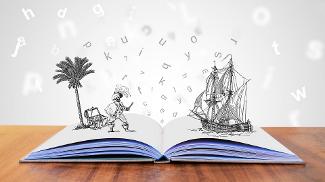
Image Courtesy of Pixabay
During my time in the academic and publishing world, I've grown fond of flash fiction--not because it's simple or easy, but because of quite the opposite.
Flash is governed by several laws of literature that makes it stand apart from longer pieces of writing, but those practices can transfer onto longer pieces, as well. As an editor for several literary magazines and creative writing teacher, I have seen how utilizing the principles of flash can improve one's writing regardless of your piece's length or genre.
So... what is flash fiction?
Flash fiction is a type of creative writing that is concise and compelling, often composed of fewer than 1,000 words. It is sometimes referred to as “micro fiction” or “short-short fiction.” This type of writing, which has been around for centuries, is quickly gaining popularity in modern-day literature.
Flash fiction is characterized by its brevity and lack of detail. It can be likened to a snapshot of a moment in time or a vivid dream. The stories often contain a twist that leaves readers wanting more. This type of writing conveys a specific mood or theme, often with a beginning, middle, and end, all within a short amount of words.
The success of flash fiction relies on the writer’s ability to tell the story without the use of excessive detail or description. This can be done through the use of vivid imagery, symbolism, and metaphors. Writers must also be mindful of their word choice and sentence structure in order to convey the story in a succinct and impactful manner.
Flash fiction has become increasingly popular in recent years, with publications such as “Flash Fiction Magazine” and “Flash Fiction Online” providing writers with an outlet to showcase their work. It has also been featured in creative writing courses, allowing students to hone their craft and explore their creativity.
Despite its short length, flash fiction can be a powerful tool for expressing emotion and conveying a message. As author and professor of creative writing, Julia Bloch states, “Flash fiction gives writers the opportunity to express complex ideas in an economical way. It’s a way of saying a lot with a little.”
Flash fiction is an exciting form of creative writing that allows writers to express their ideas and capture a moment in time in a few words. It can be a great way for both new and experienced writers to explore their creativity and challenge their writing skills.
References:
Bloch, J. (n.d.). What Is Flash Fiction?. Retrieved from https://www.penn.museum/sites/flashfiction/what-is-flash-fiction/ Flash Fiction Magazine. (n.d.). About Flash Fiction Magazine. Retrieved from https://www.flashfictionmagazine.com/about/ Flash Fiction Online. (n.d.). About Flash Fiction Online. Retrieved from https://flashfictiononline.com/about/
Why Study Academic/Literary English?
10 November 2022

Photo Courtesy of Pixabay
The English language is full of complexities and nuances, and one of the most interesting aspects of the language is its literary English. Literary English is the language of literature, including poetry, plays, novels, and other works of art. It’s the language that makes literature so beautiful and engaging. Learning literary English is important because it helps us to understand and appreciate literature more deeply, as well as to develop our own writing skills.
Literary English is different from spoken English in terms of its vocabulary and syntax. It often contains words and phrases that are not used in everyday conversation, and its sentence structure is often more complex than that of spoken English. This complexity makes literary English more expressive and evocative, allowing writers to create vivid images and convey complex emotions.
Whereas we use English language everyday in speech and various forms of writing, this language tends to be more colloquial, relying on slang, jargon, and a level of comfortability. Literary English, on the other hand, is meant for the creation of memorable creative writing or academic works. While literature may use colloquialisms to build dialogue or develop a purposeful tone, it is important to understand the distinction between the two.
Studying literary English also helps us to understand and appreciate the underlying themes of works of literature. By understanding the nuances of language, we can better understand the author’s message and make more meaningful connections with the text. In addition, learning literary English helps us to develop our own writing skills. By studying the use of language in literature, we can gain insight into how to craft our own writing in a more effective and engaging manner.
Ultimately, learning literary English is an important part of being an educated reader and writer. It helps us to understand and appreciate literature, as well as to develop our own writing skills. Whether you’re a student or just an avid reader, learning literary English is an essential part of any language education.
The Continuing Allure of Edgar Allan Poe
31 October 2022

Photo Courtesy of Pixabay
Edgar Allan Poe is one of the most influential and famous authors of all time. His works have been studied and analyzed for decades, and his ideas have had a profound impact on literature and culture. Poe is renowned for his dark and mysterious style of writing, which often explores themes of death, loss, and madness. But what many people don't realize is that Poe also had a deep interest in philosophy and was inspired by the concept of the Universal in his works.
The Universal is a concept that has been around since ancient times. It is the idea that all of creation is interconnected, that everything is part of the same whole. For Poe, this concept was an important source of inspiration. He believed that the Universal could be found in the everyday, mundane aspects of life, and that it was essential to understanding the mysteries of the universe. His works often feature characters who are struggling to make sense of their own lives and the world around them.
Poe was ahead of his time in his exploration of the Universal. He wrote about themes that are still relevant today, such as the search for meaning in life, the power of the mind, and the importance of understanding our place in the world. He also had a fascination with the supernatural and often wrote about ghosts, spirits, and the afterlife. His works often take the form of stories or poems, but what makes them truly unique is the way he weaves the Universal into each one.
In his works, Poe managed to capture the essence of the Universal and create something truly unique. His works are still studied and admired today, and his ideas continue to inspire new generations of writers and thinkers. Poe was a visionary and a pioneer in the exploration of the Universal, and his works remain as relevant and powerful as ever.
I've noticed as each year passes, fewer and fewer students know who Edgar Allan Poe is... growing up, we Millennials were reading "The Raven" and playing "Fall of the House of Usher" on PC... this is no longer the norm.
Trying to make lessons engaging, either visually or in some other sense, will help generate more authentic interest.
To engage my students with "The Tell-Tale Heart", I've designed a simple, straight-forward police report graphic organizer to outline the plot points and have students work with significant imagery in a fun way. Check in out on my Teachers Pay Teachers, The Crazy English Lady:
© Copyright Ashley Carranza